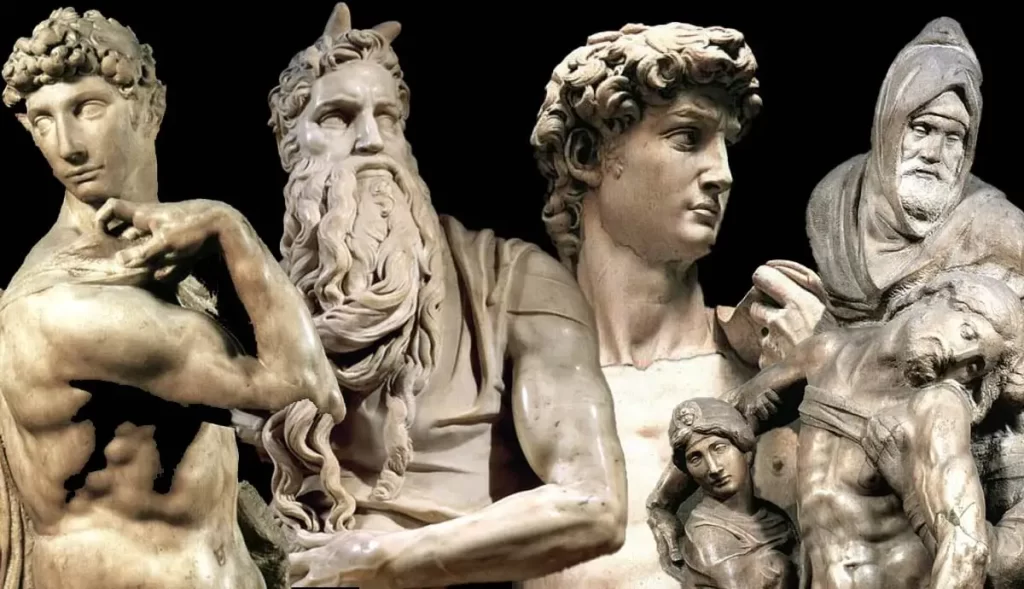In this article, we will show you some of the most influential historical gays that have influenced our history. Some of them you may already know, but about the others, you perhaps didn’t know. So, let’s check them out together.

©iStock photos
Introduction to 7 influential gays that have influenced our history
Many important historical figures were members of the gay community, making monumental contributions to various fields despite social pressures and oppositions, discrimination, political prosecution, social taboos, or undisguised bigotry. Some were publicly recognized as gay, paving the way for others. Here are 7 of these figures from different fields and eras.
Alexander the Great
Alexander inherited a kingdom from his father, Philip II, and conquered Persia and other lands. Guided by Aristotle, he spread Greek culture through conquest and attraction. Alexander is often claimed by young gender and sexual minorities as one of ancient history’s most significant conquerors.
Not much is known about his sexual life. However, there is a credible belief that Alexander took other male lovers, such as his companion, Hephaistion. However, only Bagoas was his eromenos. The term eromenos describes a specific relationship in ancient Greece: pederasty. The eromenos was the younger, submissive male in the pederastic dynamic.

©Getty Images
Julius Caesar
While ruling the Roman Empire as a dictator, Julius Caesar, his rivals attacked him, often targeting rumored queer relationships. Accused of “sleeping his way” into a position of power, Caesar spent much time with King Nicomedes of Bithynia, and his rivals mocked him for apparently taking a “submissive role” in that relationship. Caesar would eventually meet his end when several senators conspired to assassinate him on the Ides of March in 44 B.C.

Leonardo da Vinci
Renaissance man Leonardo da Vinci was not only an inventor and artist famous for his works “Mona Lisa” and “The Last Supper”, but also an intellectual. Despite this, his sexuality is often overlooked. However, records show that he was arrested for sodomy in 1476. A book by Walter Isaacson called “Leonardo da Vinci: The Biography” revealed that da Vinci was an openly gay man in 15th-century Florence, based on thousands of pages from his notebooks which showed he had a string of younger male companions.

©Oscar Wilde c. 1882, Photograph taken by Napoleon Sarony. (Image: Everett Historical/Shutterstock)
Oscar Wilde
Oscar Wilde, the famous playwright, married a woman and had two sons. He was later accused of homosexuality and tried for gross indecency with men. Wilde was sentenced to hard labor for two years and died in exile. 2017, the British government posthumously pardoned him under “Turing’s Law.”

Hadrian – The Roman Emperor
Hadrian was married to Sabina Augusta but also had male lovers. Roman men, including emperors, had sexual relationships with other men alongside their marriage. The Romans did not define sexuality as ‘bisexual.’ They expressed themselves through their sexual acts rather than their choice of sexual partners. Hadrian’s most famous male lover, Antinous, drowned while sailing down the Nile in October AD 130. Hadrian founded a new city named Antinoöpolis in his honor and erected statues celebrating his beauty. He had Antinous worshipped as a god – an unprecedented award for anyone not a member of the imperial family.

©Portrait by Michiel Jansz. van Mierevelt, 1625–26
King James I of England
The British monarch King James VI of Scotland and King James I of England, son of Mary, Queen of Scots, is considered a prominent figure of homosexuality in the early modern period. Despite marrying Anne of Denmark, James had public relationships with male courtiers, most notably George Villiers, whom he made the Earl and later Duke of Buckingham. Despite his statements against homosexuality, James and Villiers were demonstratively devoted to each other in public, leading to a famous epigram that compared James to his Tudor predecessor, Elizabeth I.

Michelangelo
There has been some speculation that Michelangelo might have been gay, but scholars cannot confirm his sexual preference. He led a mostly solitary life with few known intimate relationships.
“Despite occasional gossip, there is no clear evidence of Michelangelo’s homosexuality or, at least, none indicating overt sexual activity. Nevertheless, the physical beauty of his monumental male nudes, such as the David, the Creation of Adam, and the decorative male nudity on the Sistine Ceiling, explicitly hints at where Michelangelo’s erotic interests lay. Gay or not gay, he did understand male anatomy much better than that of a female.
The final wording of the most influential historical gays
We have a list of 7 crucial historical gay people to share with you. Do you already know about them being gay? We also want to know who your favorite one is. Please share your thoughts with us by speaking or writing.



